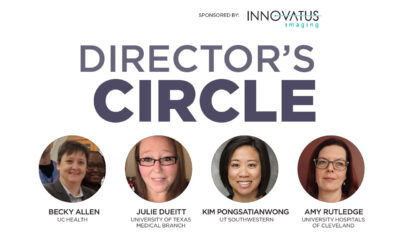
By Daniel Bobinski

When it comes to choosing between coffee or tea, I’m a coffee guy. Straight coffee with cream. Once in a blue moon I’ll order a decadent cup of what I call overly priced coffee-flavored milk, but mostly I opt for a plain old cup-o-joe.
What I’m getting at is I’m no expert in tea, but there’s one thing I like about watching people make tea: it’s symbolic. You put some leaves in hot water and the water changes. Sometimes the water turns green, or yellow, or orange, or any number of colors. Some leaves make the water sweeter; some make it bitter. Others just give the water a gentle flavor. Sometimes the change is dramatic, sometimes it’s mild. I like the symbolism involved, because just like tea leaves, people tend to act in different ways when they, too, get in hot water.
So, here’s the question. When you find yourself in hot water, what effect do you have on the environment? In other words, “What flavor is your management tea?” When you find yourself in hot water, do you become bitter and turn your surroundings bitter as well? Or are you soothing, with a corresponding ripple effect on those around you? Is the effect mild so nobody knows there’s anything wrong, or can people tell from far away what kind of atmosphere you’re generating?
If you care at all about how deeply your coworkers engage, it behooves you to get feedback on how you handle yourself when a crisis hits, or when you’re in hot water, so to speak. Over the years, I’ve found that many people have no idea how they’re coming across and what kind of effect they have.
THE POWER OF A 360-FEEDBACK REPORT
Perhaps the best tool to get information on how you’re coming across is a 360-feedback report. Yes, they’re touted by some and scorned by others, but I believe the usefulness of a 360 feedback is hard to beat – if it’s done well.
For those who’ve not heard about them before, 360 feedback reports gather information from multiple coworkers about a person’s effectiveness. The “360” means you’re getting a “full circle” view, in that feedback is gathered from all the perspectives around you. Typically, people surveyed include superiors above you, peers alongside you and those who are “under” you on the corporate ladder. Some 360 versions also ask for the opinions of customers!
A lot of people in management and leadership don’t like 360s because they’re likely to hear some not-so-pleasant things. As an executive coach, I say unless we hear where the pain exists, we can’t identify the underlying cause and work on eliminating it, if possible. The purpose of a 360 is to get feedback on one’s strengths and weaknesses as perceived by others and evaluate that feedback with an assumption that perception is reality. A particular observation made by a group of employees may not be the intention of the person being evaluated, but it is perceived reality for the people assessing the manager.
REAL BENEFITS OF USING 360S
Think of it this way. Jack may think he’s behaving a certain way, but if everyone around him perceives him to be acting otherwise then Jack’s perception of himself might be a little off.
Example: Jack thinks he’s an idea-generating catalyst who brings innovation and valuable momentum to a team. However, his 360-report reveals that the people who work around Jack perceive him to be an arrogant, egocentric grandstander who ignores or belittles the input of others, especially when the pressure is on.
It’s not always easy to swallow painful news like that, so getting a coach is always a good idea. Which is what Jack did, because the above story is real – saving that his real name is not Jack. The point is that Jack slowed down enough to realize he had work to do, but he probably wouldn’t have known it was necessary without getting actual feedback presented in a professional way.
Through working with his coach, Jack also became aware of why his coworkers no longer offered their opinion to him. It wasn’t because they no longer lacked ideas or suggestions, which is what Jack had surmised. Instead, Jack learned they were tired of being castigated publicly whenever Jack didn’t think their ideas could work.
Another example is the woman who wanted to be seen as a critical thinker. She analyzed proposed solutions and pointed out what needed to be fixed to make them as effective as they could be. The problem? She never complimented others on their ingenious solutions. Her one-sided emphasis on what was not correct led others to perceive her only as a Negative Nellie.
ADVICE FOR USING 360S
A 360 profile can measure perceptions in many areas, such as communication, performance, integrity, teamwork, and customer service, just to name a few, and many good reasons exist for their use. For anyone choosing to get one, I offer the following advice:
- Don’t be hasty in choosing one. Do a little research on what’s available and choose carefully.
- Maintain anonymity for all contributors. The more anonymous the input, the more accurate the 360 is likely to be.
- I shouldn’t have to say it, but I’ll say it: maintaining anonymity is paramount.
- Have the results delivered in private by someone trained to do so.
- The purpose of conducting a 360 should be to create plans for growth, development and/or improvement. A “safe” environment for completing one and reviewing it is vital. Perceptions, however painful, should not be glossed over; but results should not be delivered with callousness either.
Bottom line, it is emotionally intelligent for people to know and understand their personal tendencies and adapt as necessary for optimal success. It’s kind of like beverages. Not everyone likes tea, and not everyone likes coffee. A good manager, like a good host or hostess, ensures a variety of beverages are available if they want people to stay around and be engaged. And how a manager acts when something goes wrong can also influence whether someone stays.
Daniel Bobinski, M.Ed. is a best-selling author and a popular speaker at conferences and retreats. For more than 30 years he’s been working with teams and individuals (1:1 coaching) to help them achieve excellence. He was also teaching Emotional Intelligence since before it was a thing. Reach him on his office phone at 208-375-7606 or through his website at www.MyWorkplaceExcellence.com.








